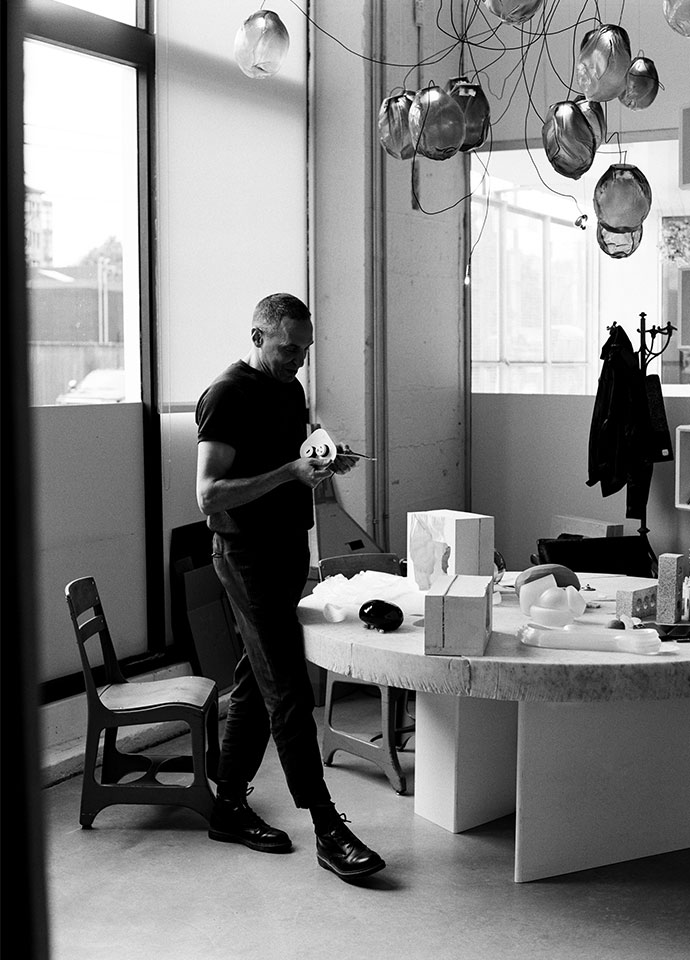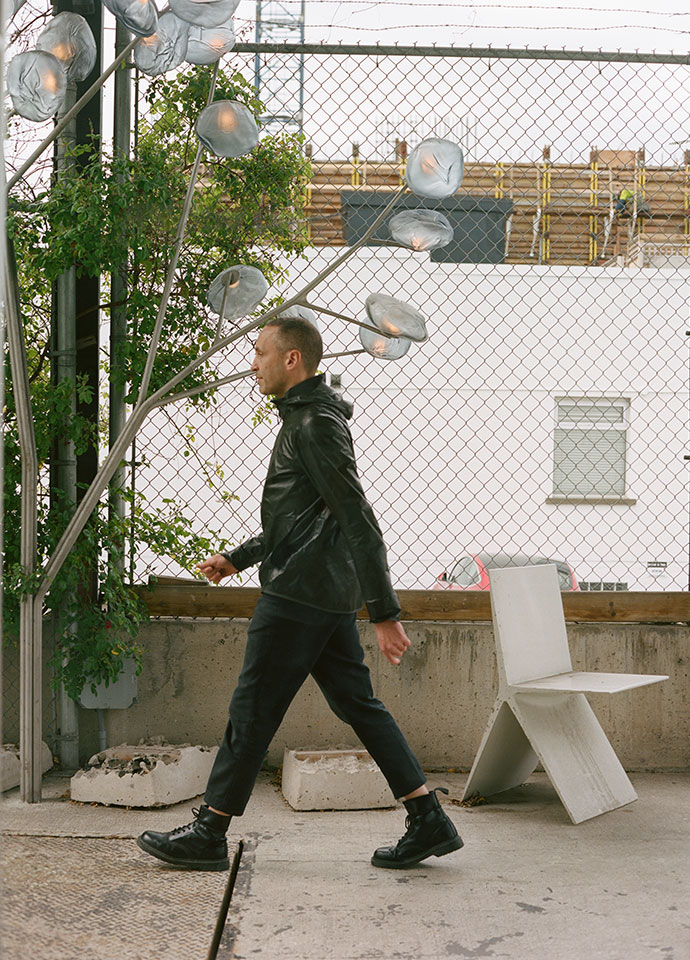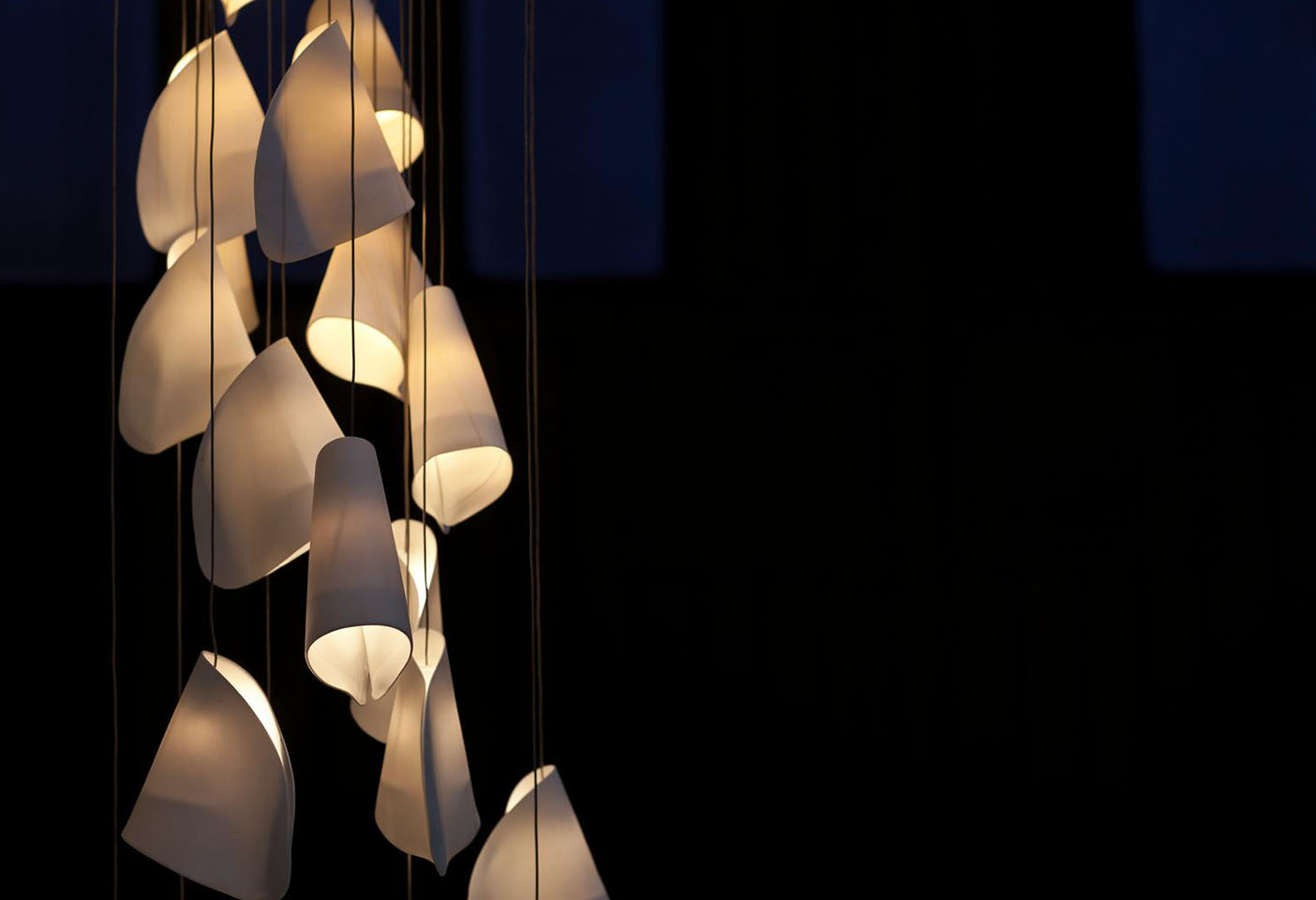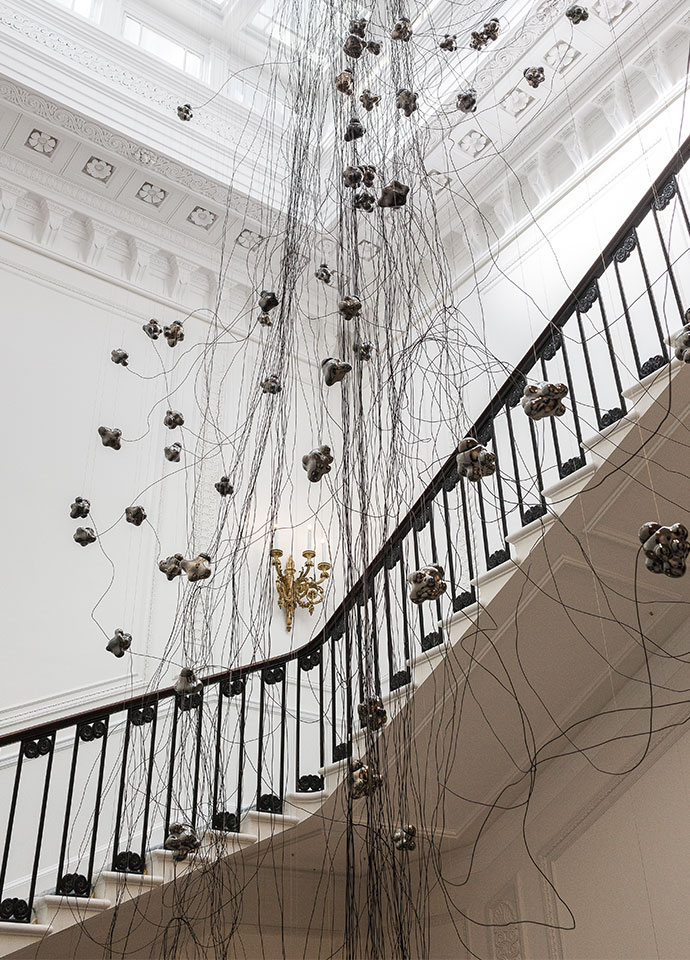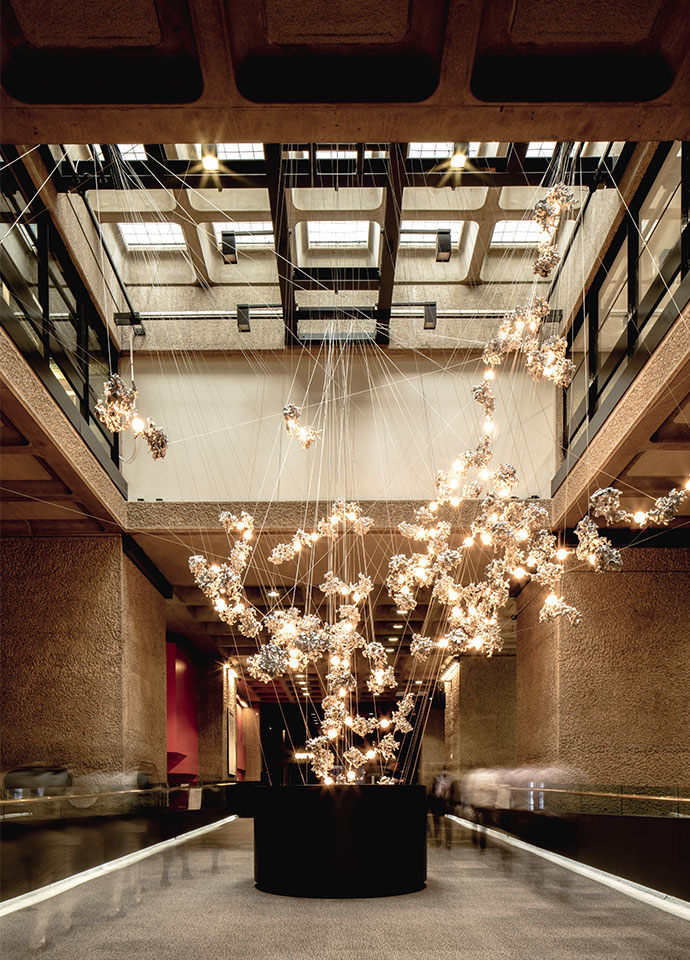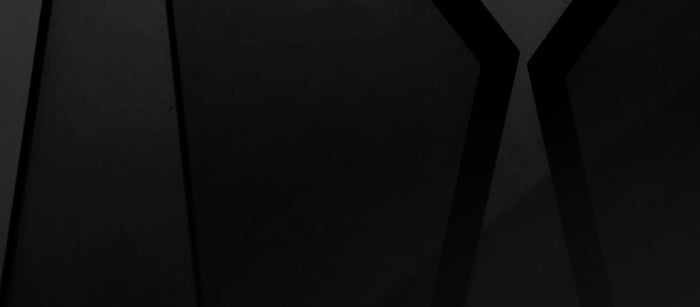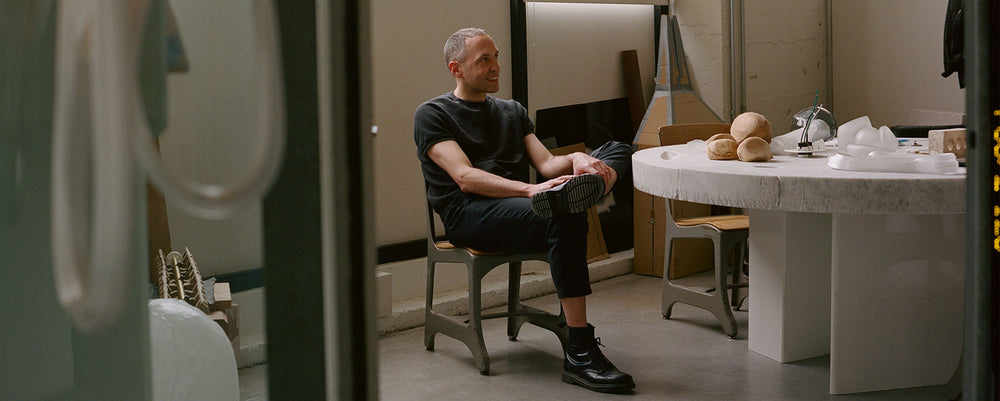
The work of Omer Arbel involves the exploration of materials and the way they behave, and misbehave, in a process that connects designer to maker reminiscent of artisanal tradition. His celebration of discoveries is shaped by a scientific approach to solving things, but also the joy found in the unexpected. Each project is numbered and works have involved pouring molten wax into ice and rotating it until it sets in beautiful, frozen motion; capturing a bolt of lightning fused into droplets of metal; and experimenting with glass in a myriad of unusual ways for his lighting brand Bocci.
The Vancuver and Berlin-based designer trained as an architect before expanding his focus to include the micro. Running Omer Arbel Office, which includes projects of architecture alongside large immersive installations and glass works for Bocci, Arbel cultivates fluidity between architecture, sculpture, invention and design. The balance between experiment and resolution allows the designer and his team the freedom to explore projects that rarely follow the traditional design process. Instead, Arbel puts the workshop first so that he can watch and learn how materials behave, letting them drive the process and the works that emerge.
"A big love of my weekly or monthly schedule is to spend those hours in the glass shop just asking the glass blowers to show me something cool, some way of manipulating glass and then adding my own layers of intuition to it," Arbel explains. "What if we reverse it, what if we change the temperature, what if we put it though this tool. Slowly, slowly, things emerge that are surprising or interesting."

On show at the Meissen exhibition in Berlin, Bocci #28 is the result of an innovative fabrication process that manipulates both the temperature and the direction of air flow into blown glass. With a slightly distorted sphere and an interior landscape of satellite shapes, #28 has an opaque milk glass diffuser, low-voltage xenon or LED lamp. Photo c/o Bocci.
"A big love of my weekly or monthly schedule is to spend those hours in the glass shop just asking the glass blowers to show me something cool, some way of manipulating glass and then adding my own layers of intuition to it. What if we reverse it, what if we change the temperature, what if we put it though this tool and slowly, slowly things emerge that are surprising or interesting.”
Omer Arbel, Creative Director and Co-founder, Bocci.
“We don’t love glass more than any other material, we love all materials, but we have this incredible sophisticated resource to work on glass ideas… and just this intimacy over 14 years of really seeing it and how it behaves at different temperatures and as a consequence of different impedes."
Omer Arbel, Creative Director and Co-founder, Bocci
For Bocci that has seen the development of its collection of extraordinary lights that began with the #14 series and is forged in the intimate relationship between design and manufacturing that is the Bocci ethos. Organic and imperfect by nature, #14, for example, is handmade from seamed cast glass with a frosted cylindrical void for a low voltage lamp, or LED, producing a warm glow similar to small candles floating within spheres of water.
“We don’t love glass more than any other material, we love all materials, but we have this incredible sophisticated resource to work on glass ideas… and just this intimacy over 14 years of really seeing it and how it behaves. Fourteen is made out of two hemispheres of cast glass" Arbel explains. "Glass has got the consistency of honey, so it’s dripping into this hemispherical form the same way that a drop of water does when thrown into a lake... In the case of glass though it’s cooling as it does that and the tops of the two hemispheres, which you never see, are shaped like a half moon and when placed together there is a watery etherial quality. So optically, that was the discovery...”
Bocci is available exclusively in South East Asia from Space – Singapore and Kuala Lumpur and Space – Australia.
